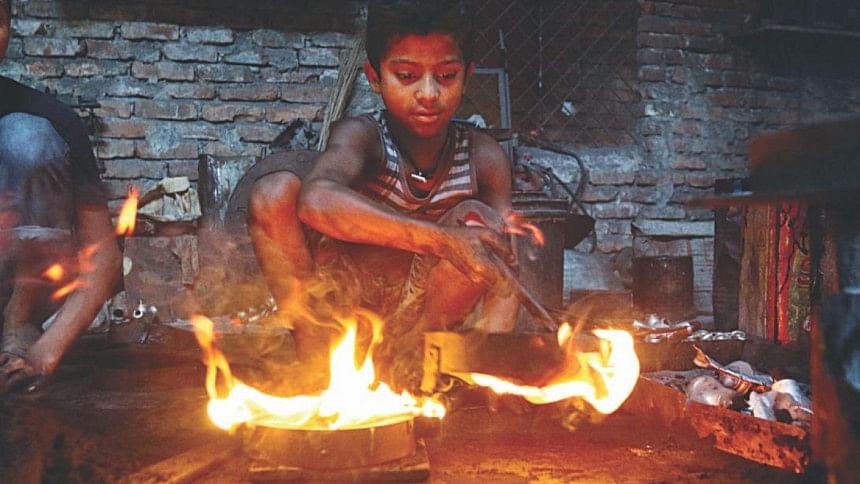Survey shows children taking up riskier jobs during pandemic

We are disheartened by a recent report published in this daily on the state of child labour in our country during the pandemic. Eleven Manusher Jonno Foundation (MJF) partner organisations carried out a survey which shows that some 7,800 out of 30,313 child labourers, who were already involved in risky jobs, have switched to "riskier jobs" between July and September across eight districts. Around 5,600 child labourers migrated in search of jobs in the past three months, and 2,400 have been forced to join new work at minimal wage. On the occasion of National Child Rights Week, MJF organised a virtual conference on "Covid-19: Present Status and Safety of Working Children" where this field-level survey data was presented.
A majority of the population had to bear the brunt of the economic crisis that resulted from the pandemic, and the shock waves did not spare children from underprivileged backgrounds. While statistics reveal that there has been a decrease in child labour over the past decade, the reduction in the number of children engaged in hazardous work has been insignificant and is a matter of grave concern. Despite Bangladesh being one of the earliest signatories of the UN Convention on the Rights of the Child (CRC) and expressing its commitment to ensure the rights of children in international forums, a lot is yet to be achieved. Although the Bangladesh Labour Law 2006 prohibits employment of children under 14, we are all too aware of the dreadful reality, as is evident from the MJF survey. During the pandemic, we have also witnessed the horrific rise in abuse of children at home, as well as at their place of work.
At a time when their tender age is meant for fun, games and education, they toil under dire circumstances to make ends meet, often forced by their very guardians. This calls for an immediate step-by-step approach so we can successfully eradicate child labour in hazardous work conditions. It is our responsibility to rescue them from the clutches of slavery, torture, sexual exploitation and other life-threatening work that risks their health and wellbeing. Coordination between government and non-government initiatives is crucial in implementing policies that will eliminate child labour, with a priority on saving children from hazardous work. As the research reveals, the pandemic has made it all the more urgent to rescue children who have been compelled to take up even riskier jobs to make ends meet. This will require helping their families with financial assistance and creating income generating opportunities for the adults, while providing education for the children.

 For all latest news, follow The Daily Star's Google News channel.
For all latest news, follow The Daily Star's Google News channel. 



Comments